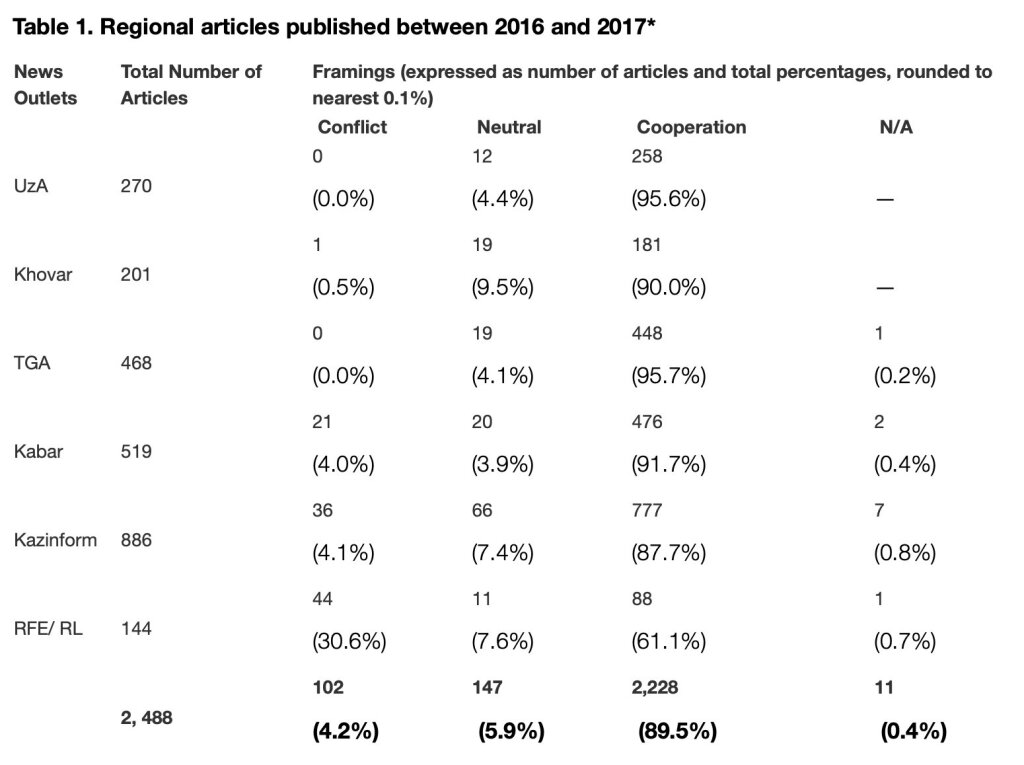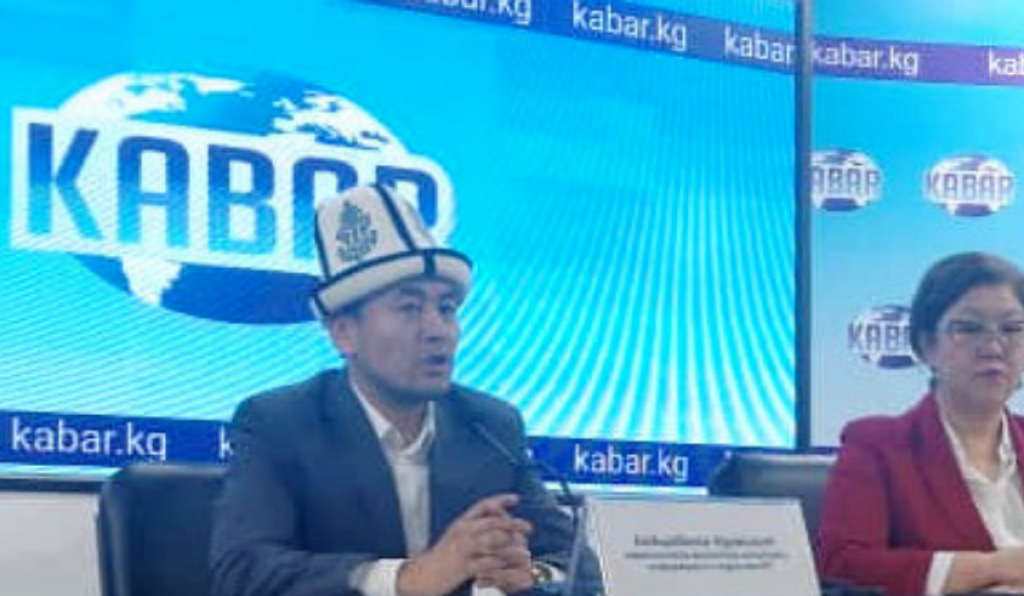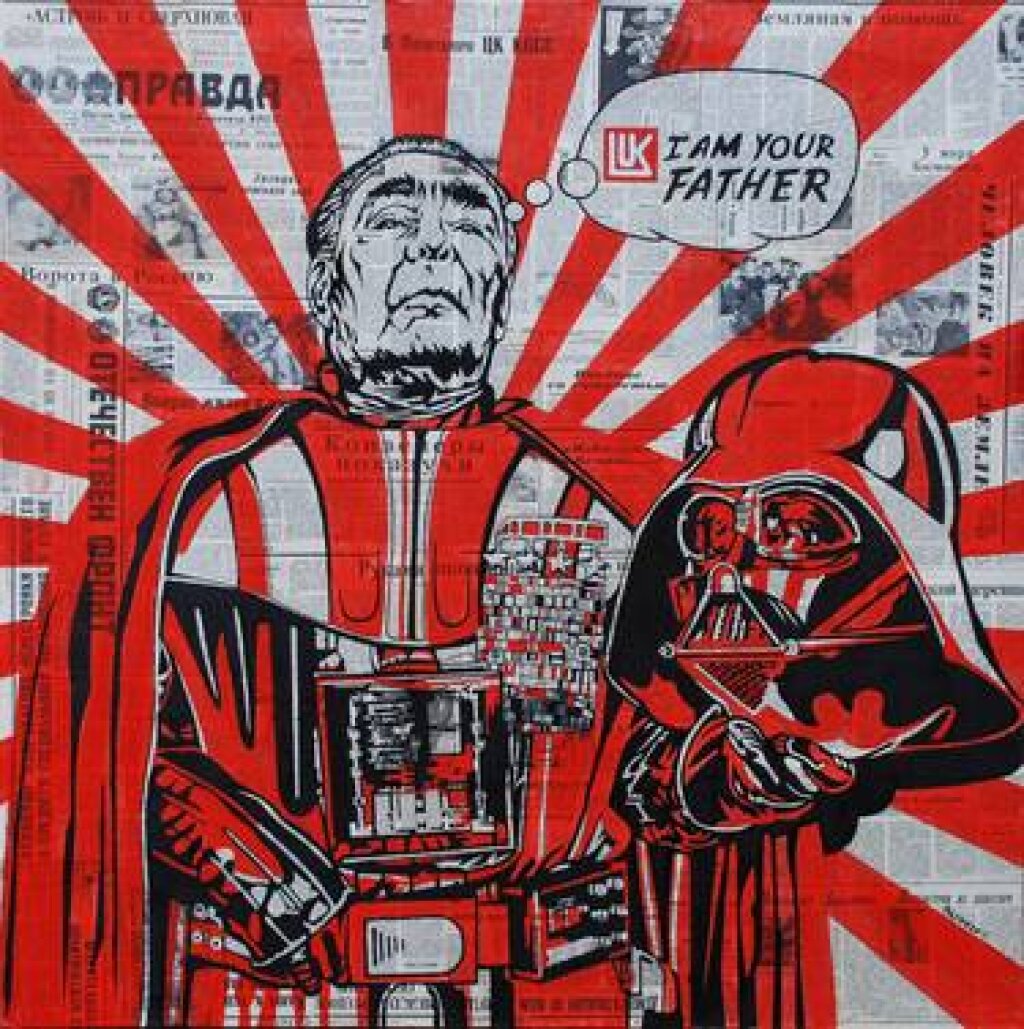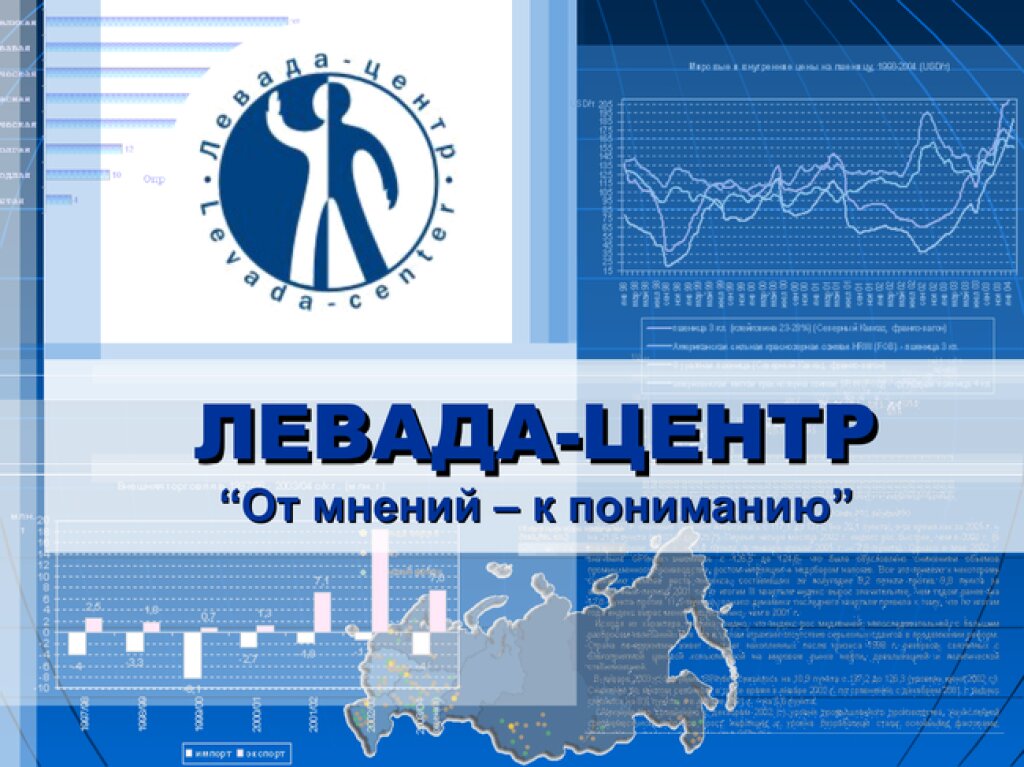The blog post is based on the 2020 research article “State-run media outlets in Central Asia: external regime legitimation through regional conflict and cooperation framing,” published in Central Asian Survey by Mariya Pak, Filippo Menga, Daniel Feuer, and Austen Dowell.
Marin Ekstrom is Research Fellow at the ERA Institute and a Research Assistant in the Central Asia Watch (CAW) Project.
Authoritarianism is on the rise around the world, with authoritarian states becoming less and less transparent to their subjects, ultimately forfeiting their trust. To secure legitimacy from the public and hence stay in power, autocrats use "external regime legitimation," a process in which a state promotes a positive image of itself by engaging with other countries’ governments. Autocrats organize high-level meetings and participate in multilateral organizations to create the impression of a well-run government that seeks to cooperate with the global community. In turn, these strategies can bolster domestic and international approval and secure rulers’ positions of power. Governments in Central Asia, as I will show here, have successfully been employing external regime legitimation for years.
A recent ERA Institute Central Asia Watch Project study on regime legitimation examined how five Central Asian governmental news outlets reported on regional events, examining how that coverage sought to shape popular opinion. Since regime legitimation aims to portray governments as active collaborators on the world stage, the study analyzed bilateral and multilateral regional events. The study conducted a quantitative content analysis of English-language news articles published in six online media outlets, dating from January 2016 to December 2017. A total of 2,488 articles focusing on regional relations between the five Central Asian states were analyzed to determine the degree of international conflict (including complaints and disputes) or cooperation (including joint declarations and meetings of heads of state). The articles were tagged as conflict-framed, cooperation-framed, or neutral-framed using the five-point Conflict Cooperation Scale (CCS).
The five state-run media corporations analyzed were the Uzbekistan National News Agency (UzA) (Uzbekistan), Khovar (Tajikistan), Turkmenistan Golden Age (TGA) (Turkmenistan), Kabar (Kyrgyz Republic), and Kazinform (Kazakhstan). The sixth outlet was the US government-funded Radio Free Europe/Radio Liberty (RFE/ RL). Given RFE/ RL’s status as an out-of-region organization, it was more likely to provide unbiased coverage of regional events.

Results show that the five Central Asian state-run media outlets overwhelmingly reported cooperation in Central Asian regional affairs. The positive reporting of events by state-run media outlets contrasted with coverage from the US-funded organization Radio Free Europe/ Radio Liberty (RFE/RL), which included a greater proportion of conflict-oriented news stories. The discrepancies in the reporting of conflict events between the five state-operated organizations and RFE/RL indicate that the Central Asian media outlets emphasized regional cooperation while downplaying or omitting references to incidents of conflict to legitimize the existing regimes. Below are some examples by country:
UZBEKISTAN: UzA's reportage largely relied on cooperative news stories and did not include any examples of conflict news. Meanwhile, coverage from RFE/ RL indicated that Uzbekistan experienced conflict incidents with Tajikistan and Turkmenistan. This discrepancy indicates that UzA disproportionately represented regional cooperation by over-reporting on cooperative events while ignoring conflict episodes.
TURKMENISTAN/ TAJIKISTAN: Khovar and TGA closely resembled the results from the UzA analysis. Khovar only had one conflict-focused article about sports, while TGA did not have any at all. The lack of conflict reportage and overemphasis on cooperation contradicted external news coverage of events in Tajikistan, Turkmenistan, and Uzbekistan, which confirmed that conflict incidents did occur.
KYRGYZ REPUBLIC: Kabar used conflict news stories to cover contentious issues between the Kyrgyz Republic and Kazakhstan, the most prominent topics being border disputes and elections. The issue started with the Kyrgyz Republic accusing Kazakhstan of meddling in Kyrgyz elections, for which Kazakhstan created difficulties for Kyrgyz goods transportation through its territory. Analysts speculate that the Kyrgyz Republic used conflict reportage to garner international support for its grievances, which pressured Kazakhstan to resolve border matters with it in a collaborative fashion. Nevertheless, Kabar also favored the use of cooperative news coverage, as it did not report on conflicts between itself and Uzbekistan (whereas RFE/ RL and Kazinform did) and gave the most attention to regional cooperation between its Central Asian neighbors, whereas the other news agencies mainly focused on interactions directly involving their home countries.
KAZAKHSTAN: Kazinform employed the greatest usage of conflict reportage out of the five state news outlets analyzed. Kazinform focused on conflict incidents when reporting on disputes between Kazakhstan and the Kyrgyz Republic and used them to a lesser extent for coverage on Kazakh-Turkmen and Kyrgyz-Uzbek issues. Overall, Kazinform still tended to minimize reports of regional conflict, especially when compared to RFE/ RL coverage.
The disparities in reporting approaches among the five Central Asian media outlets can be explained by the nature of the political regimes in which they operated at the time of study. Uzbekistan, Tajikistan, and Turkmenistan function as tightly controlled authoritarian regimes. Their governments maintain a strong grip on media outlets in these countries, which means news can more easily be swayed to suit geopolitical needs. Meanwhile, the authoritarian regimes of the Kyrgyz Republic and Kazakhstan are comparatively more relaxed and allow for a greater degree of journalistic freedom.
This analysis revealed how Central Asian state-run outlets deliberately overplayed stories of regional cooperation, thus serving the objective of upholding the status quo, i.e., the existing regime. It is critically important to be conscious of external regime legitimation and other media manipulation strategies, since such awareness allows observers to look beyond state-imposed perceptions.



